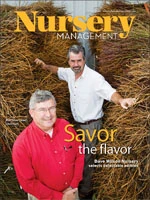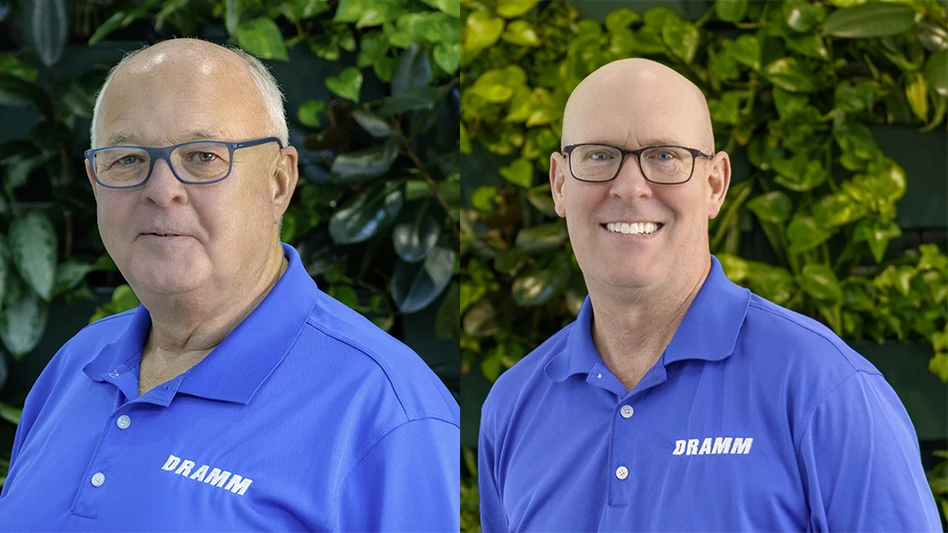|
 Mycorrhiza means “fungus roots” which is a symbiotic association between specific fungi and the fine, young roots of higher plants. The majority of plants strictly speaking do not have roots, rather they form mycorrhiza. Mycorrhiza means “fungus roots” which is a symbiotic association between specific fungi and the fine, young roots of higher plants. The majority of plants strictly speaking do not have roots, rather they form mycorrhiza.
There are seven principle types of mycorrhiza. The two most important mycorrhizas are the endomycorrhiza and ectomycorrhiza. Endomycorrhiza typically colonize herbaceous plants, shrubs, many ornamental, fruit and nut trees, vegetables and agronomic crops and turf grasses. More than 85 percent of higher plants form endomycorrhizal associations. The ecotomycorrhiza form associations with conifers, pines, and hardwoods such as birch, beech, eucalyptus, fir, oak, willow and magnolia.
Ectomycorrhiza colonize around 10 percent of higher plants.
From nursery to landscape
Mycorrhiza can enhance efficiency of plant roots to absorb water and macro- and micro-elements from the soil or container media. This helps reduce fertility and irrigation requirements, increases drought resistance and plant resistance to pathogens. Mycorrhiza enhance plant health and vigor and minimize stress. There are opportunities in incorporating mycorrhiza during nursery production so that when the ornamental shrub or tree is transplanted into the landscape, it has greater stress resistance, survivability and re-growth.
Mycorrhiza and fertilization
The continued adoption of best management practices occurring in the nursery industry makes it highly conducive for growers to use mycorrhiza. A greater proportion of inorganic, controlled-release fertilizers are being used today than soluble fertilizers, which is beneficial for mycorrhizal associations. Under high temperature container production conditions, typical of Texas summers (120° F), bush morning glory (Ipomoea carnea) grown with endomycorrhiza (AMF) plus an inorganic controlled release fertilizer (ICRF) at recommended rates did better than the ICRF alone, or organic slow release fertilizer (OSRF) alone at recommended rates, or OSRF plus AMF. This is highly relevant to the nursery industry which predominately uses ICRF fertilizer. With these changes in cultural practices, use of ICRF fertilizers and reduction in pesticide usage, there are opportunities for utilizing mycorrhizal fungi.
 The use of mycorrhiza in the nursery may translate to better performing plants in the landscape.Photo © Dreamstime.com/HxdbzxyMycorrhiza can survive in nursery production systems. In a study that we conducted in a commercial nursery in Texas, four species were used as host plants -- Nandina domestica ‘Moon Bay,’ Loropetalum chinense var. Rubrum ‘Hinepurpleleaf,’ Salvia gregii and Photinia fraseri. Plants were inoculated with arbuscular mycorrhizal fungi, Glomus intraradices, and grown in a commercial nursery in Texas. The commercial inoculum of G. intraradices only enhanced growth of N. domestica. However, intraradical hyphae development and colonization (total arbuscules, vesicles/endospores, hyphae) of L. chinense, N. domestica and S. gregii increased at the higher fertility levels. S. gregii had the greatest mycorrhizal development and a 216 percent increase in hyphae development and colonization at the higher fertility level. This was significant for commercial nursery production, since there was not a decrease in colonization occurring at the higher fertility levels. The use of mycorrhiza in the nursery may translate to better performing plants in the landscape.Photo © Dreamstime.com/HxdbzxyMycorrhiza can survive in nursery production systems. In a study that we conducted in a commercial nursery in Texas, four species were used as host plants -- Nandina domestica ‘Moon Bay,’ Loropetalum chinense var. Rubrum ‘Hinepurpleleaf,’ Salvia gregii and Photinia fraseri. Plants were inoculated with arbuscular mycorrhizal fungi, Glomus intraradices, and grown in a commercial nursery in Texas. The commercial inoculum of G. intraradices only enhanced growth of N. domestica. However, intraradical hyphae development and colonization (total arbuscules, vesicles/endospores, hyphae) of L. chinense, N. domestica and S. gregii increased at the higher fertility levels. S. gregii had the greatest mycorrhizal development and a 216 percent increase in hyphae development and colonization at the higher fertility level. This was significant for commercial nursery production, since there was not a decrease in colonization occurring at the higher fertility levels.
In the landscape
We need to change our mentality about solely looking for greater growth and higher phosphorus uptake with mycorrhizal plants. Under high fertility conditions, it is not realistic to see growth differences with mycorrhiza.
In a nursery setting, a more realistic goal is to achieve good mycorrhizal colonization so that the ornamental shrub or tree can be transplanted into a stressful landscape environment — and not only survive, but re-establish growth more quickly than a non-mycorrhizal plant. One should not be so concerned about differences in plant growth during nursery production, since water and fertility are normally not limiting factors. However, greater growth and establishment following transplanting is an important value-added asset of mycorrhizal landscape plants.
Adding value
Mycorrhiza is not a panacea or silver bullet for solving all the nursery industry production challenges. The use of mycorrhiza along with other improved cultural practices, including BMPs, can improve propagation and production efficiency and the development of more stress resistant plants for the landscape. Mycorrhiza can enhance transplanting establishment and success. Mycorrhiza are not for all commercial plant systems. In general they work better with a more-coarse rooted, perennial plant that may be subjected to transplanting problems or to stressful landscape sites. The potential exists for marketing value-added, mycorrhizal plants that command higher prices.
Fred T. Davies Jr. is professor, horticultural sciences, Texas A&M University, f-davies@tamu.edu.
This was adapted from a presentation to the Southern Region International Plant Propagator’s Society.
|

 Mycorrhiza means “fungus roots” which is a symbiotic association between specific fungi and the fine, young roots of higher plants. The majority of plants strictly speaking do not have roots, rather they form mycorrhiza.
Mycorrhiza means “fungus roots” which is a symbiotic association between specific fungi and the fine, young roots of higher plants. The majority of plants strictly speaking do not have roots, rather they form mycorrhiza.






